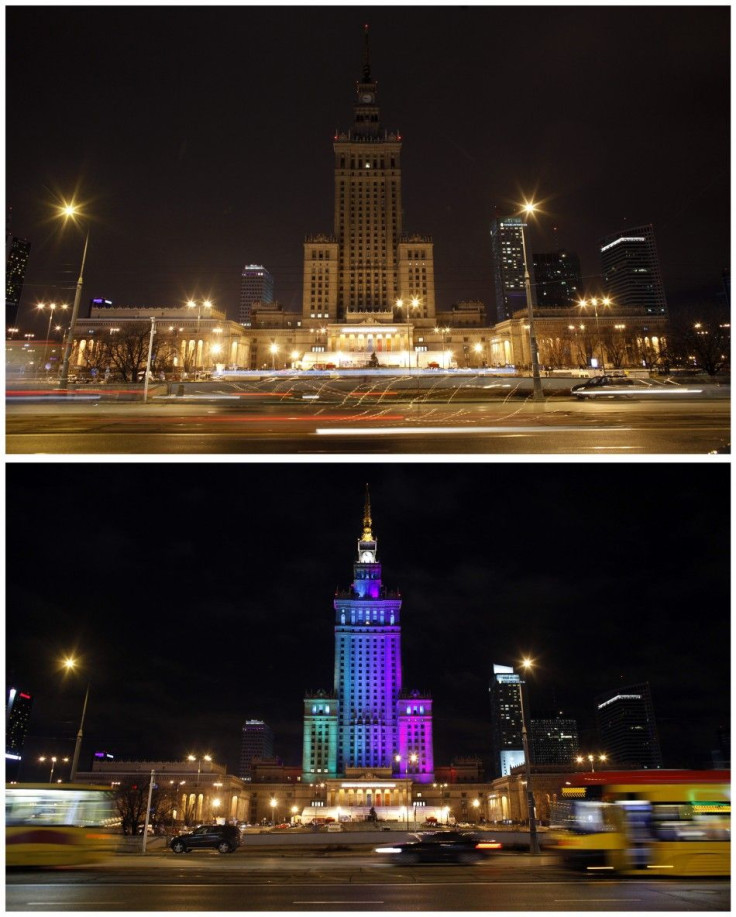The Paradox of Partisanship: A History Lesson
Opinion

The country had become hopelessly divided along a bitter partisan divide. While all political factions recognized the urgent need for reform, no party could command a sufficient majority to pass meaningful legislation. After enjoying a brief resurgence, the economy had weakened, causing the already alarming budget deficit to swell. Those on the left demanded increased social spending to ease suffering and reflate the sagging economy, while those on the right insisted that only steep cuts and sound monetary policies could create the lasting prosperity that would benefit all. Untethered to consistent policies or a systematic approach to the glaring problems afflicting the republic, the country drifted towards disaster.
Sound familiar? The situation facing Poland in the spring of 1926 was in fact more desperate than the United States in 2012. The country's economy was more depressed, its political system more dysfunctional, and its international situation more precarious. Poland had emerged as an independent state only in 1918, liberated by a combination of Allied victory in WWI and the efforts of Joseph Pilsudski, its inspirational leader.
In his youth, Pilsudski was a revolutionary socialist, determined to free Poland from the iron grip of the czar. Through a combination of perseverance, singleness of purpose, and luck, he was able to resurrect Poland as an independent republic, and through his inspirational leadership, to protect the state against its traditional enemies. Although lacking formal military training, he defeated the Red Army, which was intent on spreading the Bolshevik Revolution to Europe.
In the Second Polish Republic's early years, Pilsudski was the champion of democracy who refused high political office. Although he could have established a personal rule, the father of Polish independence opted for a parliamentary republic, the dream of his youth. In 1923, he had retired from public life. But after three years, the liberator and founder of the reborn republic became dissatisfied with the petty political infighting that characterized the young democracy. Pilsudski was keenly aware that Poland had been partitioned by her rapacious neighbors in the late 1700s, when partisan politics and democratic excesses left the once-powerful Polish state weak and divided, and therefore vulnerable to foreign intervention.
To avoid this fate, he reestablished himself as head of state by staging a coup d'état in May 1926. By now, his politics had become decidedly more conservative. His youthful idealism had existed largely in the abstract, where it was immune to the imperfections of the real world. As leader of the Polish nation, responsible for its continued existence, he was forced to deal with ambiguous, fluid, and uncertain circumstances, and was therefore often forced to choose between the lesser of two evils. But a broad spectrum of the Polish people, weary of the constant bickering and confident in Pilsudski's leadership, welcomed the change as the only viable solution to the partisan morass.
Pilsudski was convinced that politics as usual was unacceptable, but had no desire to establish a dictatorship. He decided to pursue a middle path, fundamentally different from the partisan wrangling that had dominated pre-coup Poland. While he would direct the government form behind the scenes, Pilsudski remained above party affiliation and incorporated the Right and the Left into his government, allowing both to participate in ideologically neutral solutions to Poland's problems. It was assumed that new government officials, selected solely on the basis of technical expertise, would be men of good will acting in the best interests of the country. To facilitate this approach, he created not a party, but a political organization named the Nonpartisan Bloc for Cooperation with the Government ( Bezpartyjny Blok Wspolpracy z Rzadem , or BBWR). Pilsudski believed that a government comprised of technical experts, not politicians, would be more stable and efficient, and less likely to get bogged down by established ideologies. It was assumed that this dispassionate approach would eventually permeate Polish government and society.
But was Pilsudski's non-partisan guided democracy a successful solution to an age old problem? While the BBWR was officially a political organization and not a party, this fine distinction often eluded its opponents, who were vilified as valuing special interests over the common good. And no matter how objective the analysis, the BBWR still had to make political decisions, often choosing between viable alternatives based on political philosophy (partisanship). Instead of seeking consensus, the pronouncements of these supposedly unbiased technocrats were used as a means to stifle debate, an essential part of a working democracy. Not surprisingly, opposition political parties felt threatened by this increasingly authoritarian approach, leading to a bunker mentality that only intensified the partisanship and extremism it was intended to destroy. In the end, it proved impossible to take politics out of the democratic political process.
So what is the significance of this history lesson for today's politics? Rather than limit political debate, efforts should be made to establish a fair, impartial, and consistent process that allows an open marketplace of ideas to determine policy. As interwar Poland's experience demonstrates, partisan politics, for better or worse, is an integral part of democracy.
Peter Hetherington is the author of Unvanquished: Joseph Pilsudski, Resurrected Poland and the Struggle for Eastern Europe , winner of the 2012 Independent Book Publishers Association's Ben Franklin Award in history. Unvanquished ($18) is available at amazon.com.
© Copyright IBTimes 2024. All rights reserved.





















